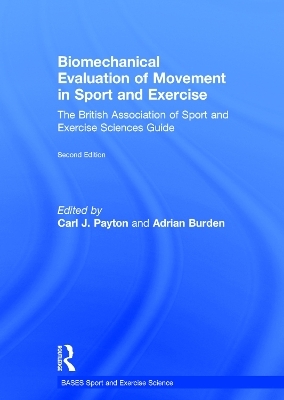
Biomechanical Evaluation of Movement in Sport and Exercise
Routledge (Verlag)
978-0-415-63264-5 (ISBN)
Now in a fully updated and revised new edition, this is still the only up-to-date, practical guide to the use of technology in sport and exercise biomechanics. It includes detailed explanations of the key theory underlying biomechanics testing and measurement, along with advice on choosing equipment and using it effectively.
The second edition includes two completely new chapters on qualitative movement analysis and the assessment of movement coordination, and covers every key functional area in the biomechanics curriculum, including:
motion analysis using video and on-line systems
measurement of force and pressure
measurement of torque and power using isokinetic dynamometry
electromyography
computational simulation and modelling of human movement
research methodologies
data processing.
Published in association with the British Association of Sport and Exercise Sciences (BASES), it includes contributions from world leading researchers and pioneers in the field of sport and exercise biomechanics. Biomechanical Evaluation of Movement in Sport and Exercise is a must-have text for all biomechanics laboratories and for any student undertaking a research project or course in methods, measurement or analysis in biomechanics.
Carl J. Payton obtained his PhD in biomechanics from Manchester Metropolitan University, UK, in 1999 where he is now a Reader and leads the biomechanics and long-term conditions research group. Carl’s main research interests are in the biomechanical determinants of elite swimming performance and in the classification of physically impaired swimmers for competition. He has provided biomechanics support to the GB Para-Swimming team since 2000. Carl has previously been Biomechanics Section Chair and member of the BASES Executive Committee. Adrian Burden began his career at Brunel University before moving to Brighton University and then to Manchester Metropolitan University, UK, in 2002. He obtained his PhD in surface electromyography in the same year and is Associate Head of the Department of Sport and Exercise Sciences. Adrian is also a Reader in Biomechanics and a Senior Fellow of the Higher Education Academy. His main interests lie in the application of electromyography to exercise, clinical and sport settings, and he has run workshops for BASES in this area.
1. Introduction [Carl J. Payton and Adrian Burden] 2. Qualitative Biomechanical Analysis of Technique [Adrian Lees] 3. Assessing Movement Coordination [Peter F. Lamb and Roger M. Bartlett] 4. Motion Analysis Using Video [Carl J. Payton and Christopher R. Hudson] 5. Motion Analysis Using On-line Systems [Clare E. Milner] 6. Measurement of External Forces [Nachiappan Chockalingam and Aoife Healy] 7. Surface Electromyography [Adrian Burden] 8. Isokinetic Dynamometry [Vasilios Baltzopoulos] 9. Data processing and Error Estimation [John H. Challis] 10. Research Methods: Sample Size and Variability Effects on Statistical Power [David R. Mullineaux and Jonathan Wheat] 11. Computer Simulation Modelling in Sport [Maurice R. Yeadon and Mark A. King]
| Reihe/Serie | BASES Sport and Exercise Science |
|---|---|
| Zusatzinfo | 15 Tables, black and white; 61 Line drawings, black and white; 30 Halftones, black and white; 106 Illustrations, black and white |
| Verlagsort | London |
| Sprache | englisch |
| Maße | 174 x 246 mm |
| Gewicht | 666 g |
| Themenwelt | Sachbuch/Ratgeber ► Sport |
| Medizin / Pharmazie ► Medizinische Fachgebiete ► Sportmedizin | |
| Studium ► 1. Studienabschnitt (Vorklinik) ► Physiologie | |
| ISBN-10 | 0-415-63264-1 / 0415632641 |
| ISBN-13 | 978-0-415-63264-5 / 9780415632645 |
| Zustand | Neuware |
| Haben Sie eine Frage zum Produkt? |
aus dem Bereich


